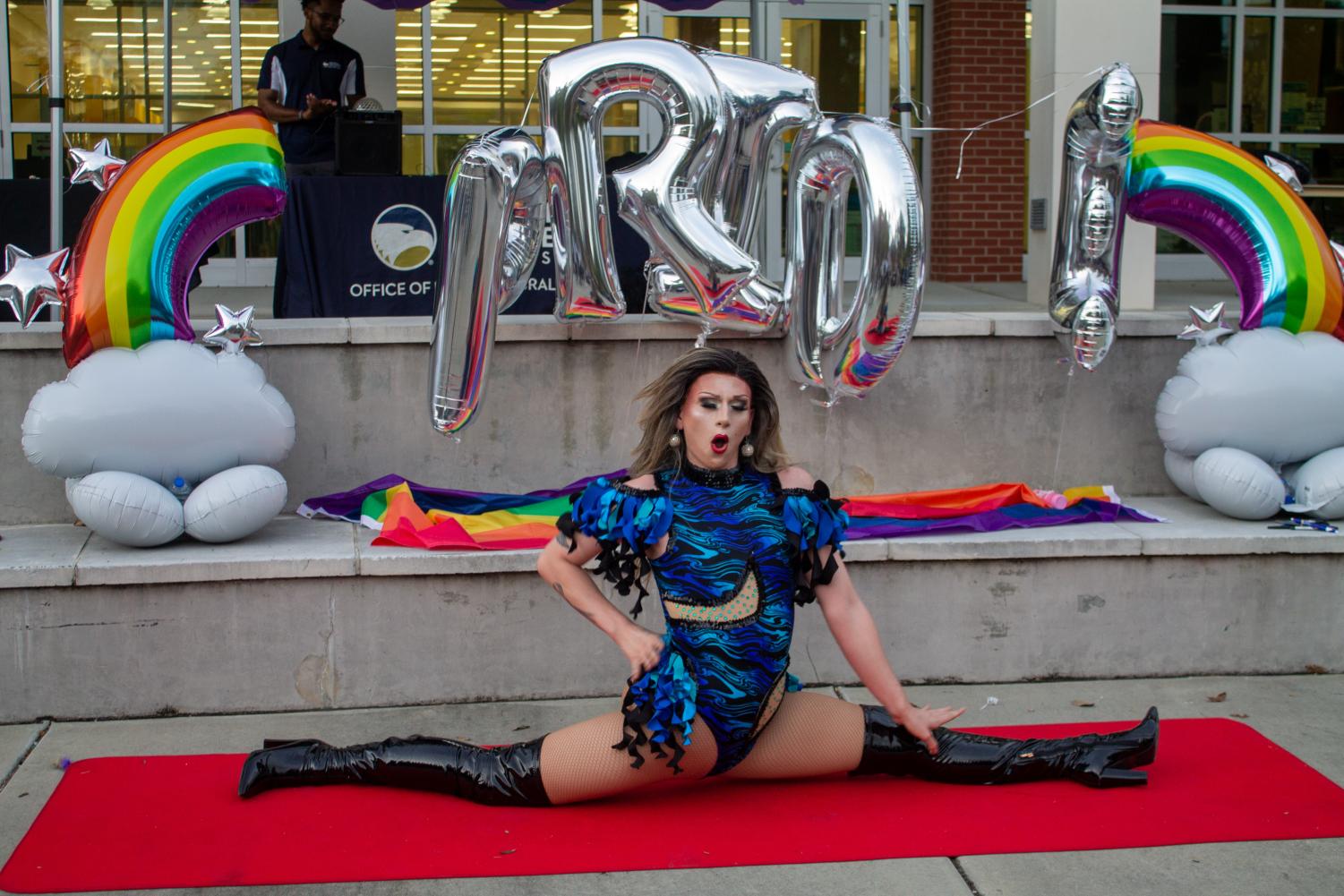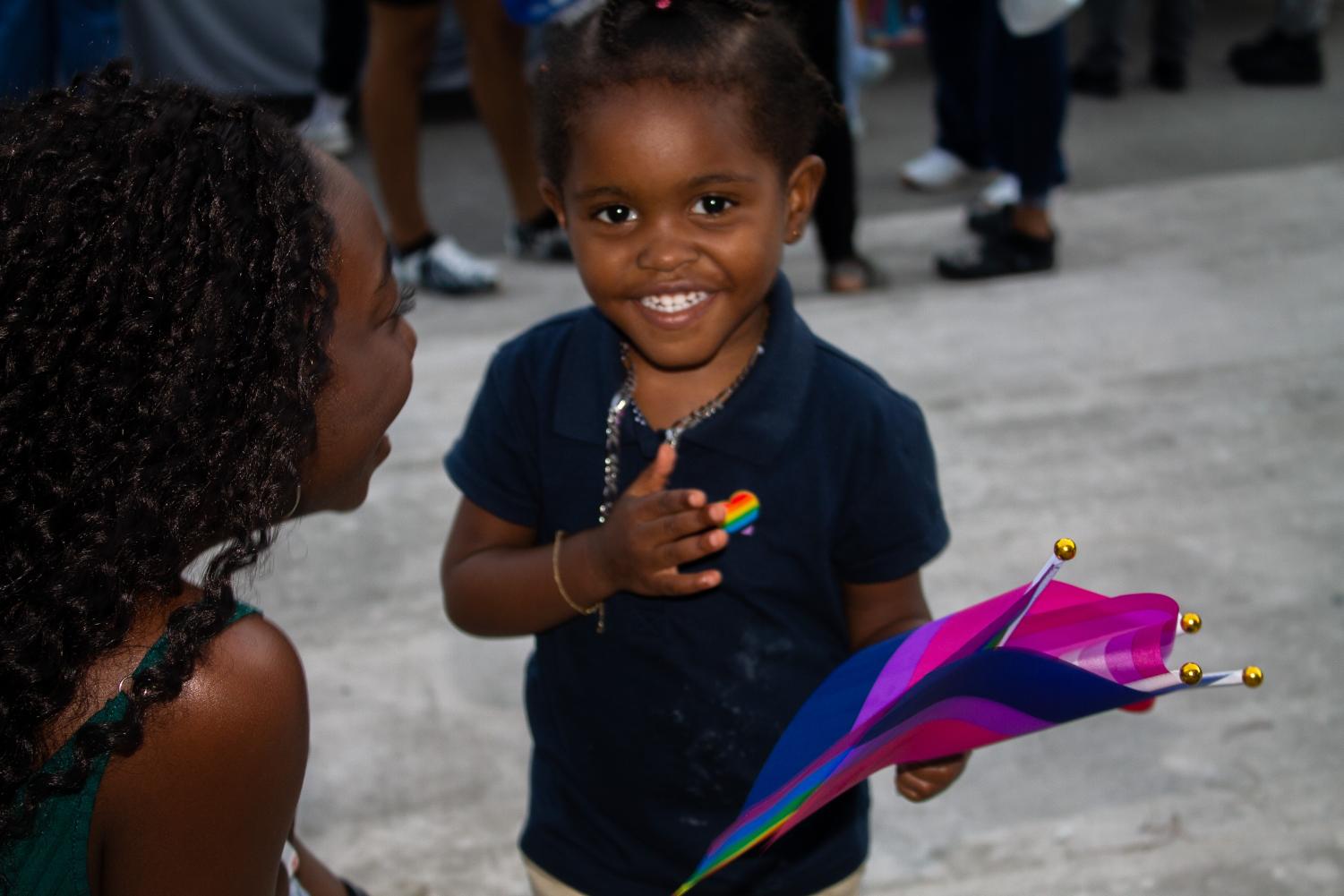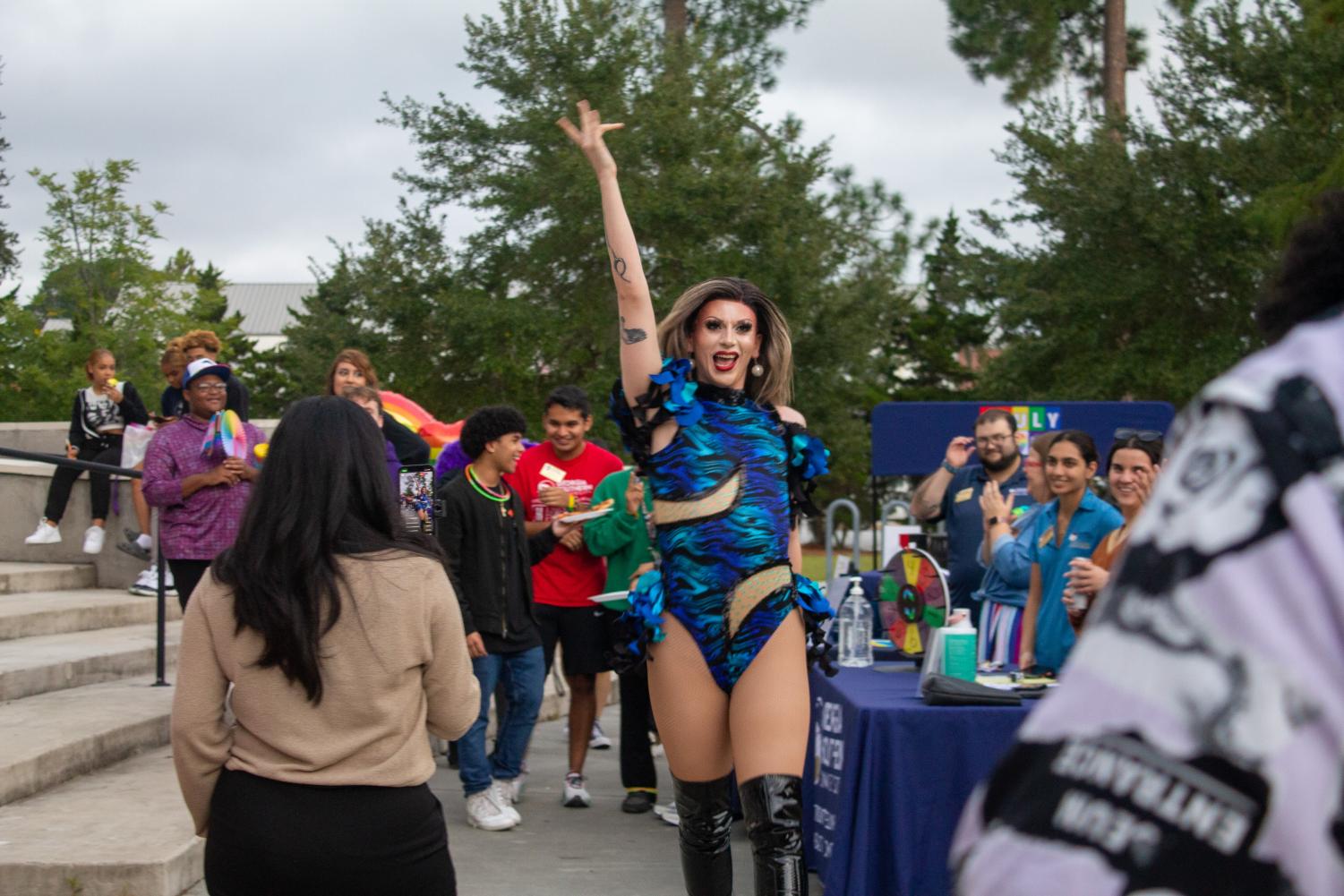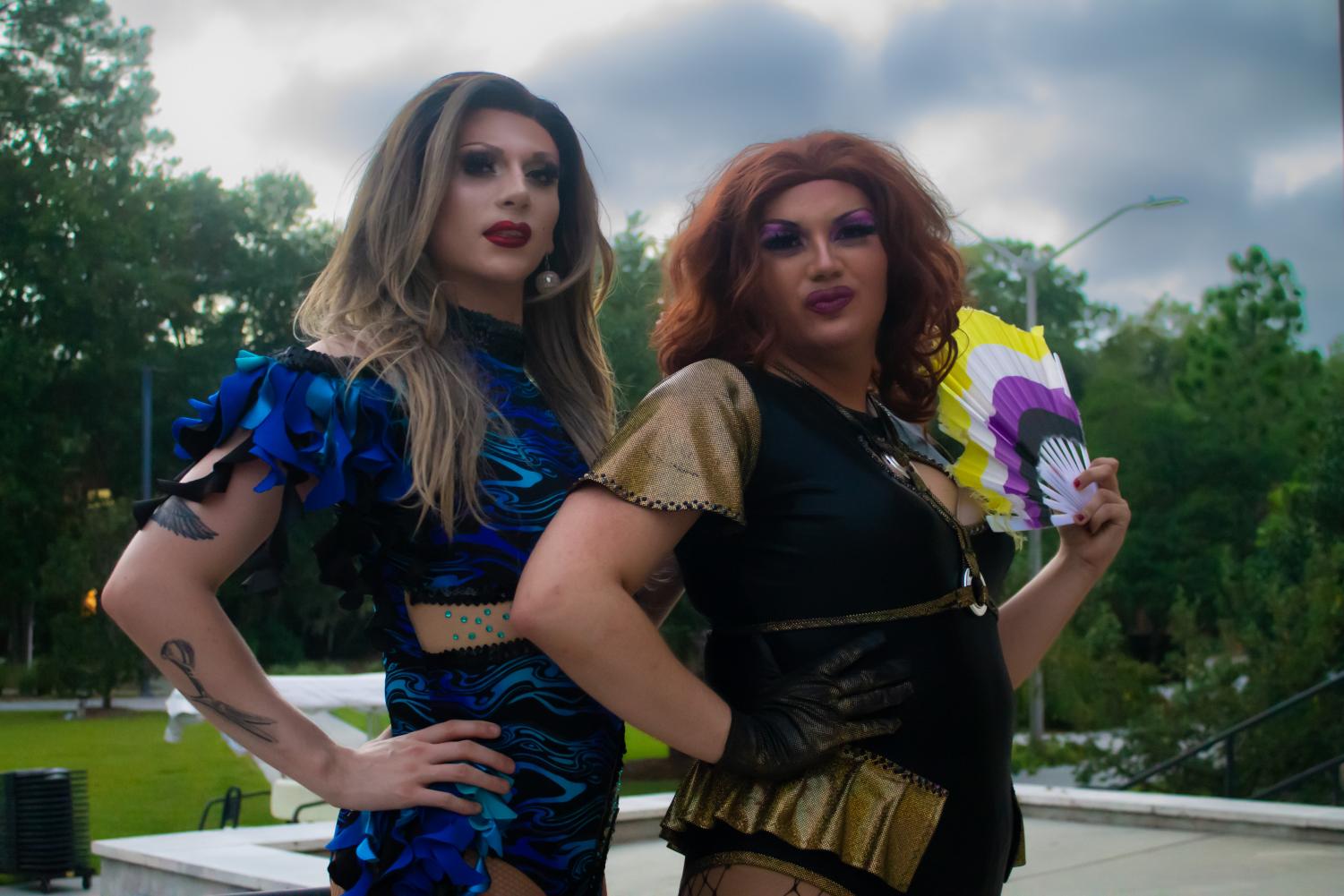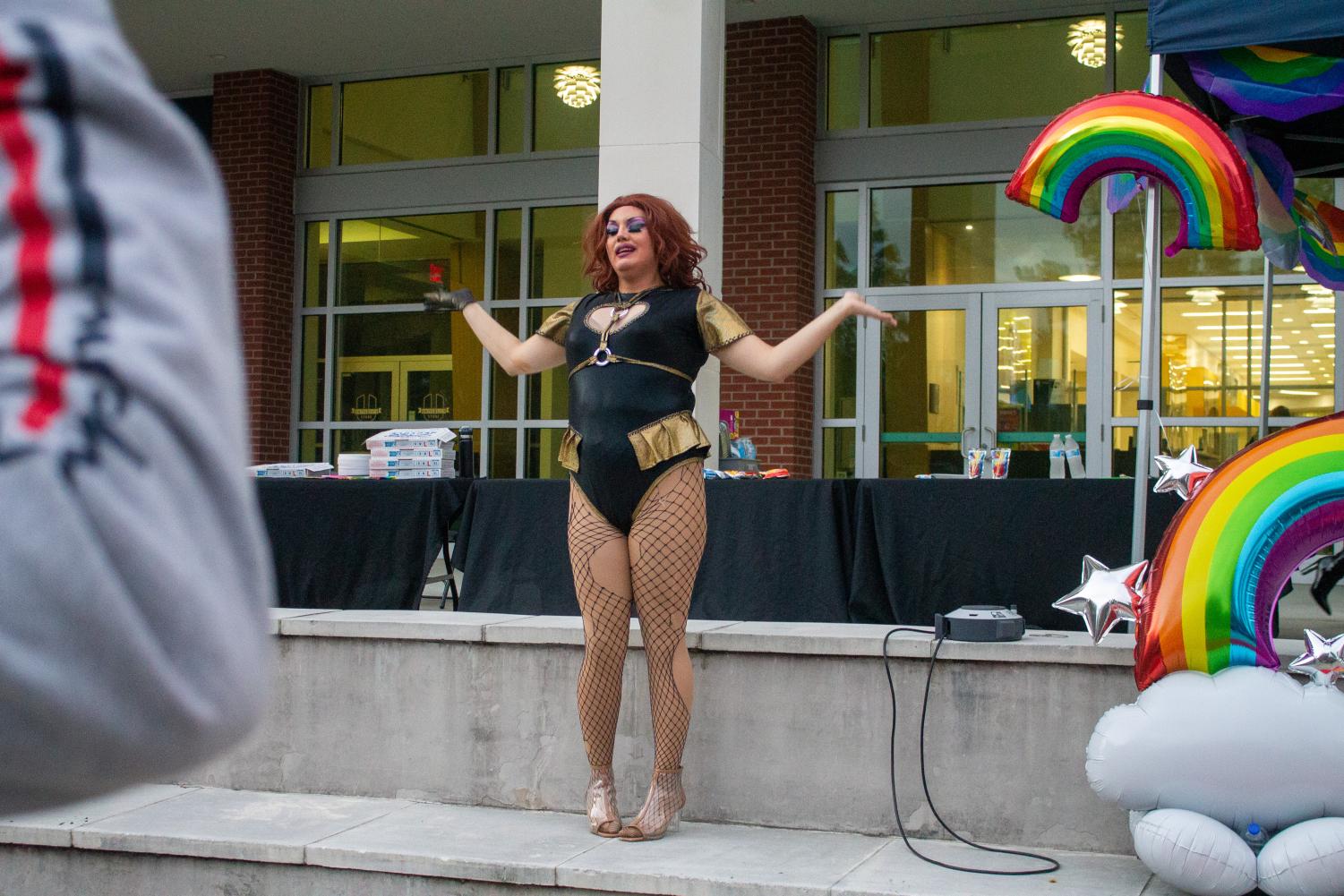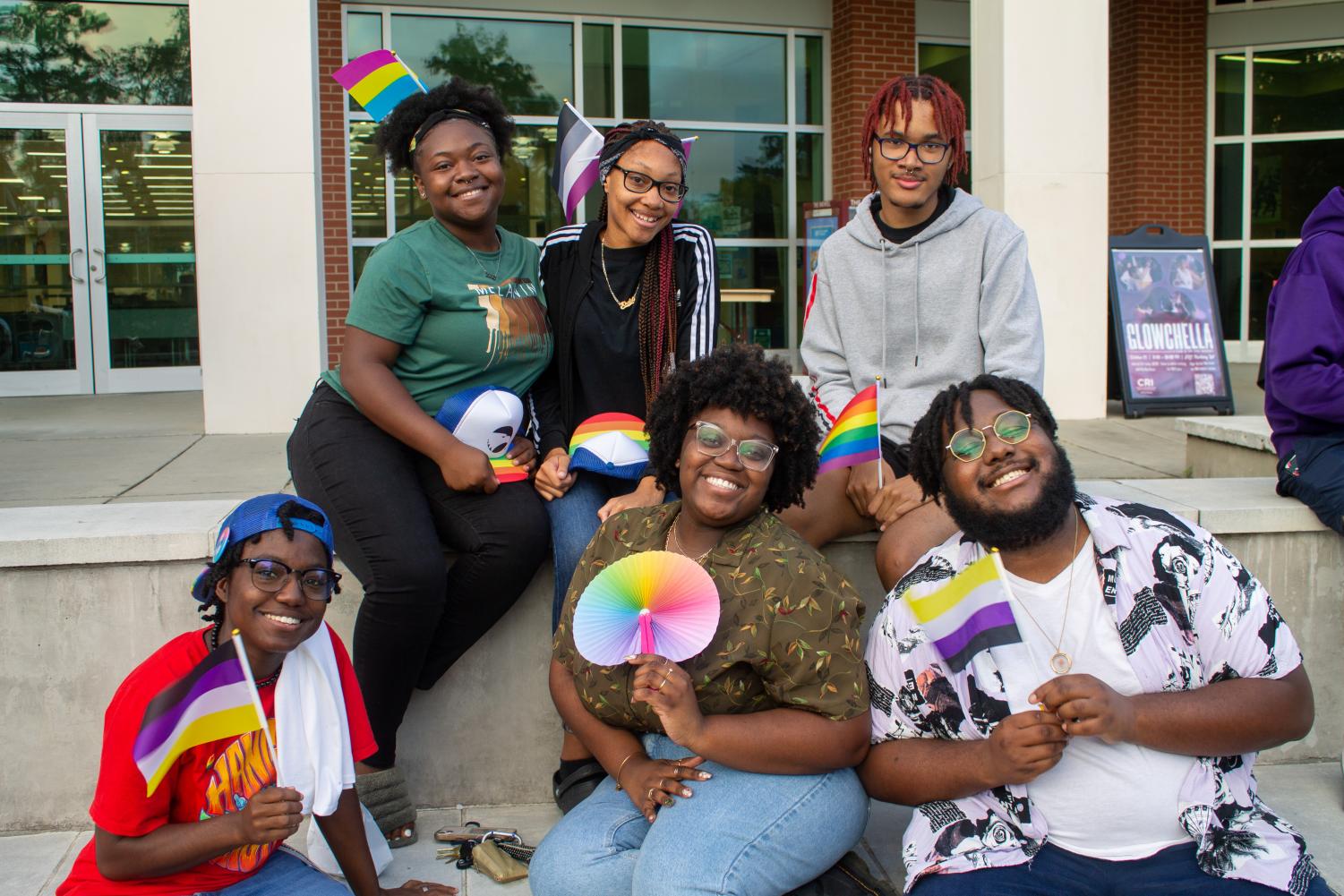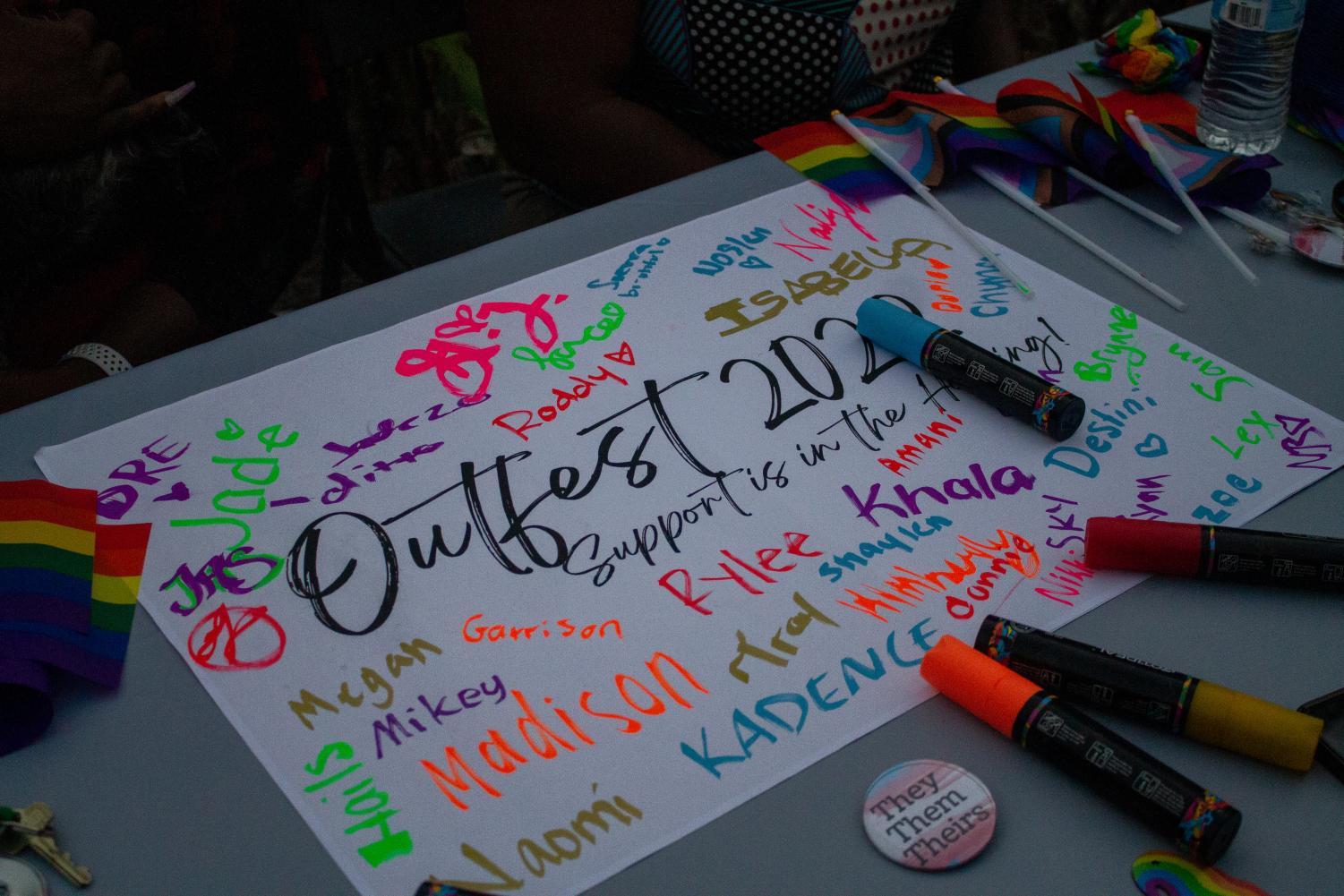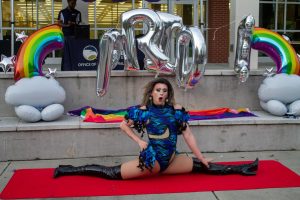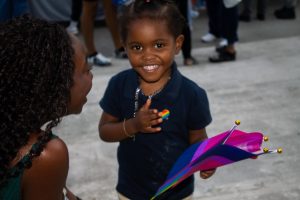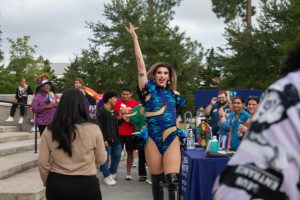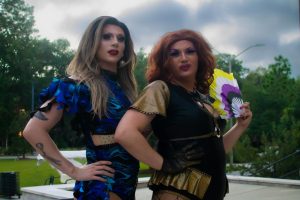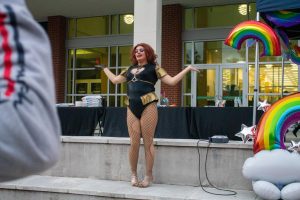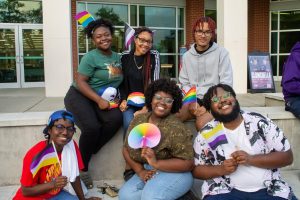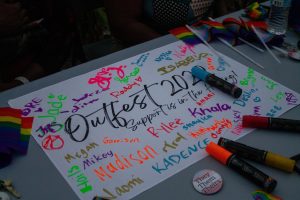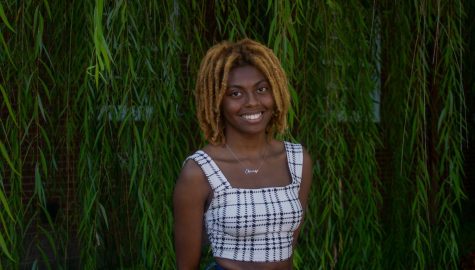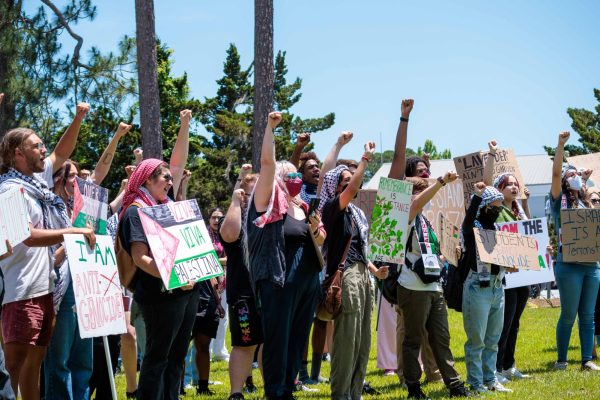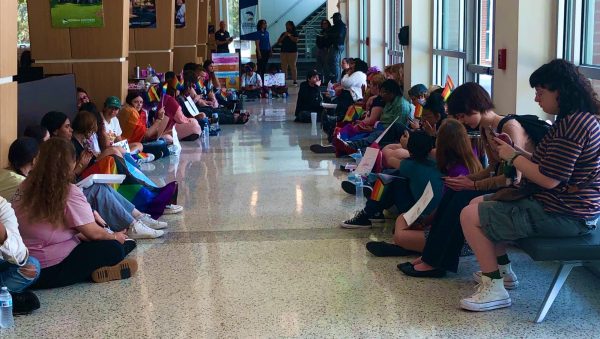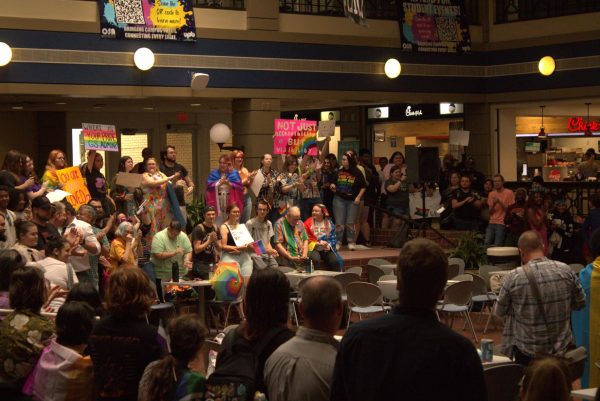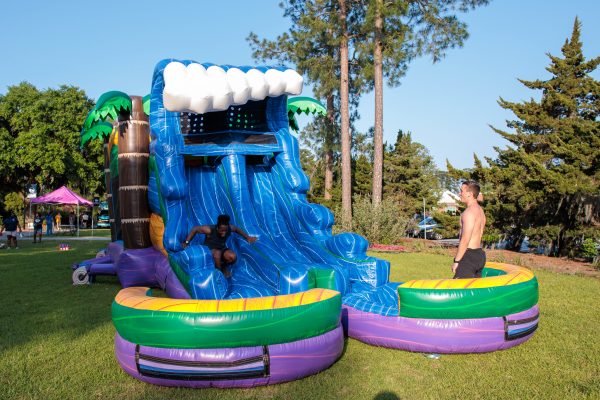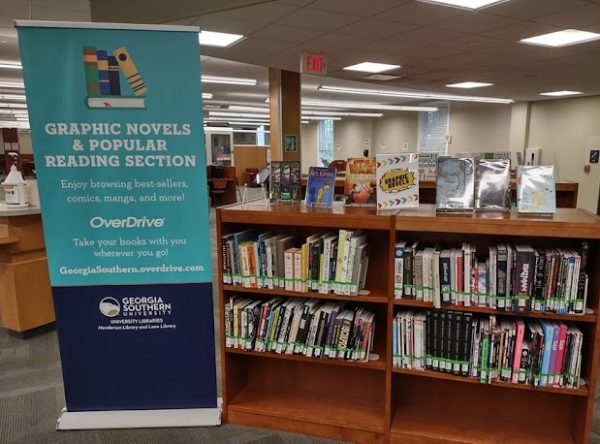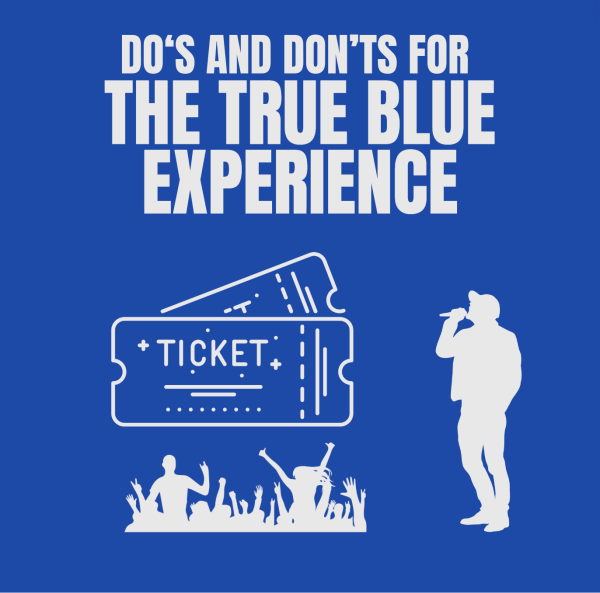(Opinion) Outfest 2022
A Brief History of The American Gay Pride Movement
Inclusivity has never looked better than at Georgia Southern’s Outfest.
Featuring performances by drag queens (onebeing an Armstrong alumni), music, food, and rainbow swag, Outfest brought students and staff of all identities together to celebrate the LGBTQ+ community.
The event was hosted by T.R.U.L.Y. You, the newest of 6 success initiatives headed by the Office of multicultural affairs, on Tuesday the October 11.
Today’s Pride movement is rooted in and carried by the continued reach for the liberation all marginalized groups have sought since the beginning of modern American society.
It should be noted that though people of color and gender non-conforming people heavily impact the culture and fronted much of the fight for LGBTQ+ rights, they still experience inequality within the community and world at large.
Everyone is having an intersectional experience, an experience where multiple factors cross to create a unique relationship between an individual and the world.
To find liberation in one arena does not negate discrimination caused by a different factor found in that same arena. Therefore all aspects of queer history and experience in America can not be summed up neatly in this article.
Homosexuality can be traced to all cultures and periods of the west. Social acceptance post-Christianity’s introduction ebbed and flowed until coming to a halt in the 13th century.
Colonization of North America forced indigenous 2 spirits – a term coined in 1990 by Elder Myra Laramee for those embodying both male and female genders as we know them now popularly in america – to adopt hetero-normative roles.
American society specifically did not see a major public cultural shift toward any queer identities until well into the 20th century.
The Library of Congress does not have texts regarding homosexuality in America before 1917, with the bulk of homosexual literature in the collection published after 1950.
The word gay was used among queer folk to identify other queers during the early 20th century as a sort of doublespeak only in-groups would understand. After being negatively associated with homosexuality The term was reclaimed by the community following the Stonewall Uprising as a public display of unity.
Before World War 2 coming out was a celebration drawing influence from debutant balls. Gay, primarily African American men in major cities, held grand drag balls as a formal introduction to the flourishing scene.
World War 2 brought the opportunity to explore sexuality to folks around the country who moved to big cities to support America’s industrial needs. However gay folks were barred from entering the military.
Without a reliable way to identify homosexuals, at times relying on the gag reflex as the sole indicator, the department of war allowed soldiers to be discharged based on suspicion; no evidence was required.
Those expelled from the military with anything other than an honorable discharge before 1944 and after 1947 were not able to receive benefits regardless of the time served. These discharges were disproportionately given to people of color barricading them further from economic or social mobility.
These conditions lasted until 2011 when sexual discrimination was banned from the military.
In 1952, homosexuality was classified as a sociopathic personality disturbance by the American Psychiatry Association. Homosexuality was seen as a moral shortcoming and an act of sexual deviance that could be cured. The classification was not overturned until 1973 after extensive protests against the decision.
The following year,1953, Executive Order #10450 was signed banning gay folks from working in the federal government. The lavender scare was a manifestation of cold war anxieties following the red scare. This remained in effect for 43 years, till 1995.
One of the most well-known foundational gay rights organizations in history, the Mattachine Society, was created in 1950 and called for freedom through social acceptance. Throughout the United States, queer folks followed suit creating vast and visible communities.
This was not met without backlash.
Fast forward to 1969, bars owned by the mafia are one of the only places gay folk can socialize in New York. Still even in ‘safe spaces’ raids were frequent and the risk of police assault was high.
On June 28, 1969, patrons of Stonewall Inn resisted the 2nd raid that week and a 6-day demonstration ensued. While not the first of its kind the monumental action has been a hallmark of change in activism and justice.
The first gay solidarity events and parades organized to commemorate stonewall were held the following year in 4 major cities. Events spread from place to place changing in form and name as the culture shifted, yet the tradition of being unapologetically queer has remained the same.
First city Pride Center is helping preserve traditions by hosting Savannah’s pride celebration on October 27- through 29.
In the 1980s, pride events were used to remember lives lost to the aids epidemic that swept minority communities. Aids was coined as the gay plague by society and was not taken seriously by the government.and as a result aids Surged to record highs in infection and death year after year.
Being infected was a death sentence more often than not until a life-saving treatment was made available in 1995. This treatment was made possible by the ACT UP collisions’ demonstrations and lasting art that greatly impacted public perception.
52 years after the start of mainstream visibility we still feel the impact of the strength and willpower of activists from the past.
We thank Stormé DeLarverie, Marsha P. Johnson, Sylvia Rivera, James Baldwin, Harvey Milk and the like who pioneered dissembling the status quo for the LGBTQ+ community, making space for future generations to live, love, and create freely.


